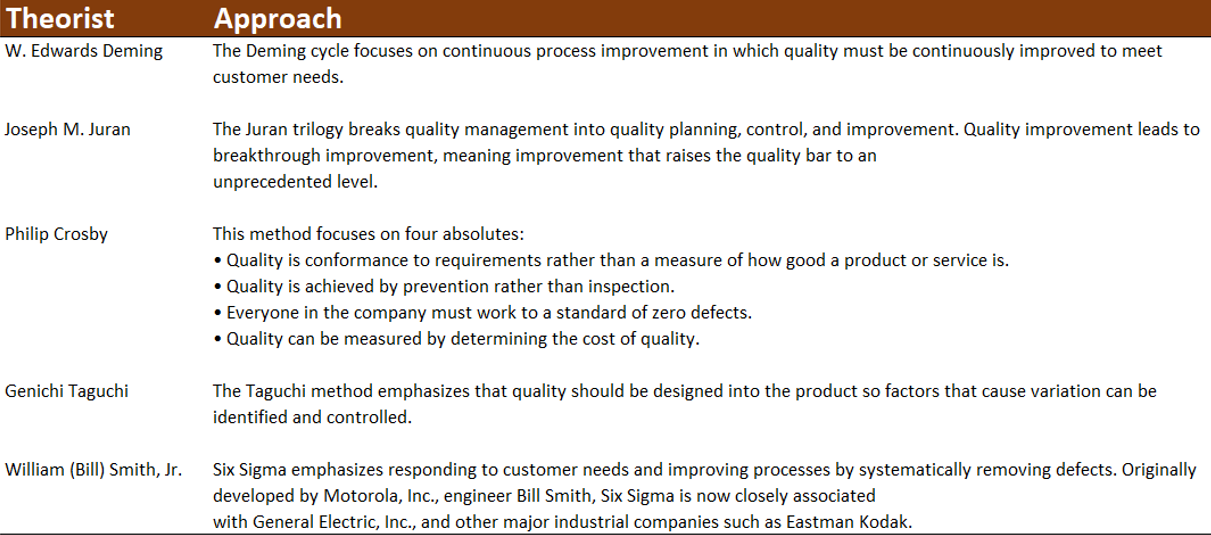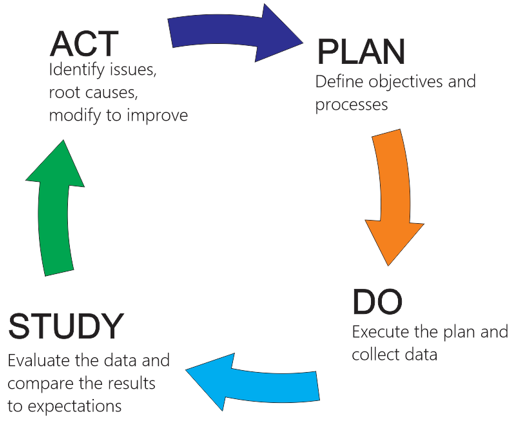Employ continuous process improvement
Enablers
- Assess existing organization continuous improvement framework.
- Plan continuous improvement methods, procedures, and tools.
- Recommend and execute continuous improvement steps.
Deliverables, and Tools

Continuous Improvement
Continuous improvement (CI) can be defined as an ongoing effort to improve products, services, or processes.
- Effort can look for small incremental improvements or large "breakthrough“ improvements.
- Institute of Quality Assurance's definition of continuous improvement includes improving business strategy, business results, and customer, employee, and supplier relationships.
- Continuous improvement is a business strategy that is developed at the organizational level for projects to adopt and use.
- Might also be implemented by an organization's Project Management
- Office (PMO).
Culture of Continuous Improvement
Continuous improvement has been used in business for nearly three-quarters of a century. W. Edwards Deming was an early leader in the field of process improvement, beginning with his work in post-World War II Japan. He taught four concepts that have been the foundation of the continuous process improvement movement:
- Better design of products to improve service.
- Higher level of uniform product quality.
- Improvement of product testing in the workplace and in research centers.
- Greater sales through global markets.
Deming's philosophy was that improving quality would reduce expenses, increase productivity, and thus increase market share.
Quality Theory Methods

Continuous Improvement Approaches
Agile project management contains small development cycles that are used to develop the product by feature and receive client feedback on each feature.
Kaizen
- Improvements are based on many small changes.
- Small changes are less likely to require major expenditures of capital than major process changes.
- Ideas come from the workers themselves, rather than from expensive research, consultants, or equipment.
- All employees should continually try to improve their own performance.
- Workers should be encouraged to take ownership of their work, thus improving worker motivation.

Continuous Improvement Tools
As discussed in earlier lessons, the following tools can be used to facilitate continuous improvement:
Lessons Learned Registers – is an important component of each project.
- Use it as a source of improving the processes in other projects.
- Avoid filing it away at the end of a project and not referring to it.
Retrospectives
- Common in agile projects at the end of each iteration.
- Help the team look back at an iteration and plan improvements for the next one.
Experiments provide a way to improve team efficiency and effectiveness.
- Some techniques include AB testing and team feedback to identify improvements.
- Perform experiments one at a time to isolate the results.
Update to Process and Standards
- Lessons learned at the project level can apply to the organization's continuous improvement process, in addition to the project management processes.
- These lessons should be escalated and evaluated for consideration at the organizational level.
Guidelines to Execute Continuous Improvement Steps
- Review the organization’s continuous improvement strategy.
- Develop a continuous improvement approach for your project, keeping in mind the project goals and the expectations of the stakeholders.
- Use lessons learned from your project, as well as from other projects, as sources of continuous improvement.
- For agile projects, use retrospectives as opportunities to improve the next iteration of the project.
- Use lessons learned at the project level to improve the organization’s continuous improvementprocess.